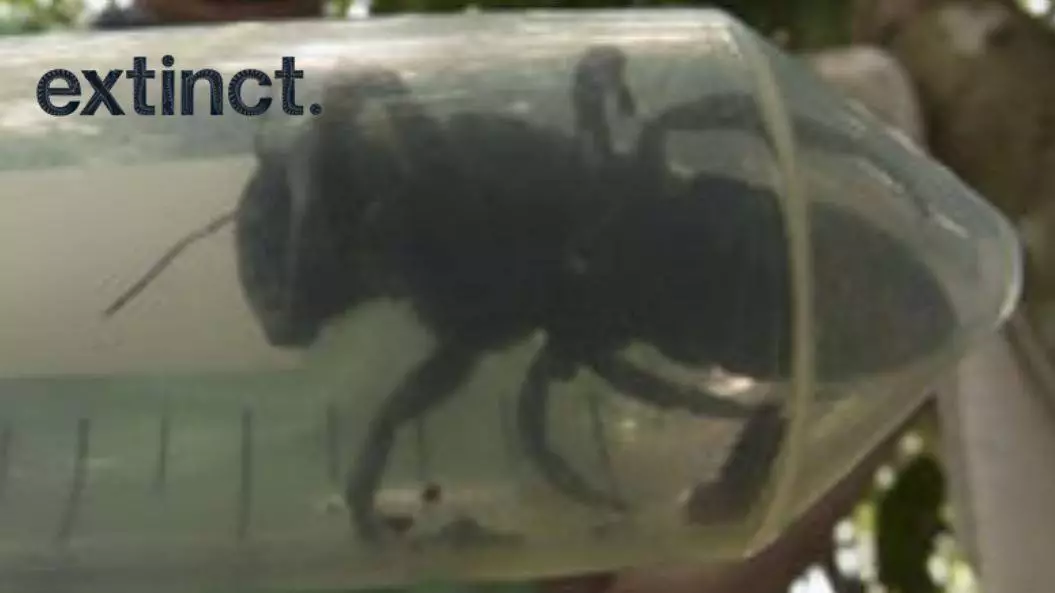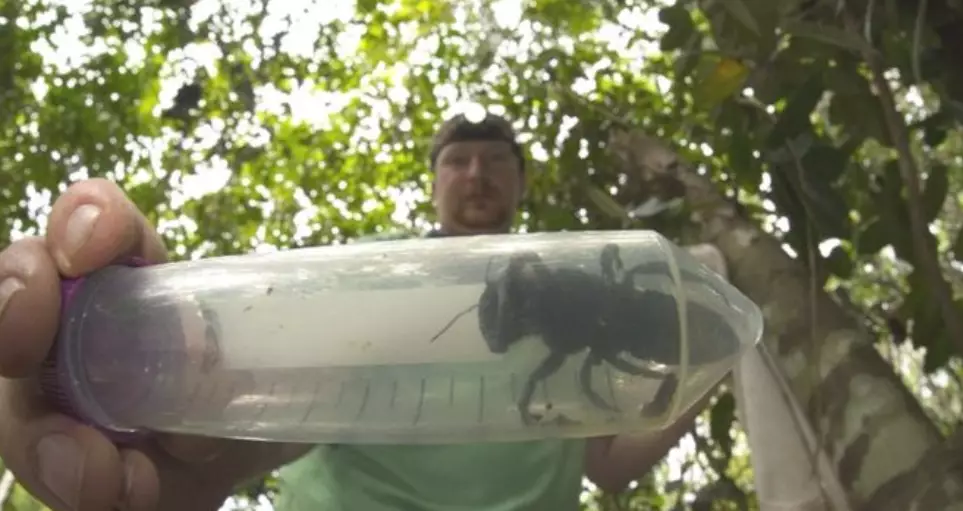
The world's largest bee has been found, years after experts thought it had been lost forever.
The massive Wallace's bee was rediscovered on a little-explored Indonesian island - known as North Moluccas - and is the size of a human thumb.
Advert
The insect was first discovered in 1858 but has eluded scientists since 1981 when several other examples were found.
More than three decades later experts managed to find a live female specimen after spending days searching the island's wildlife - and with such a rare find they made sure it was photographed and filmed.
The team set off on their expedition last month, retracing the footsteps of Alfred Russel Wallace - who discovered the bee - through Indonesia to find the long lost insect.
Natural history photographer Clay Bolt was the first person in 38 years to capture a live example of the insect on camera.

He said: "It was absolutely breathtaking to see this 'flying bulldog' of an insect that we weren't sure existed anymore, to have real proof right there in front of us in the wild.
Advert
"To actually see how beautiful and big the species is in life, to hear the sound of its giant wings thrumming as it flew past my head, was just incredible."
Scientists have now been buoyed by their success, which they believe raises hopes that the island could be home to many more giant bees, which is one of the rarest insects on the planet.

But according to reports, there are currently no laws or restrictions on the trading of Wallace's bee, so its future is not certain.
Advert
Speaking to the BBC, one of the members of the expedition, Eli Wayman, an entomologist at Princeton University, said she was hopeful that the discovery would lead to further study of the bee, which could help broaden knowledge of the insect and help protect it from extinction.

Global Wildlife Conservation (GWC) supported the trip as part of its campaign to track down some of the world's 'lost species'.
Robin Moore said: "By making the bee a world-famous flagship for conservation, we are confident that the species has a brighter future than if we just let it quietly be collected into oblivion."
Advert
And Wallace's bee isn't the only breakthrough the group has enjoyed in recent months, in January they also announced that hey had discovered a group of rare Bolivian frogs, which belong to a species thought to be down to just one male.
A bee-utiful story, I think we can all agree.
Featured Image Credit: Clay BoltTopics: Science, World News, Interesting, Animals